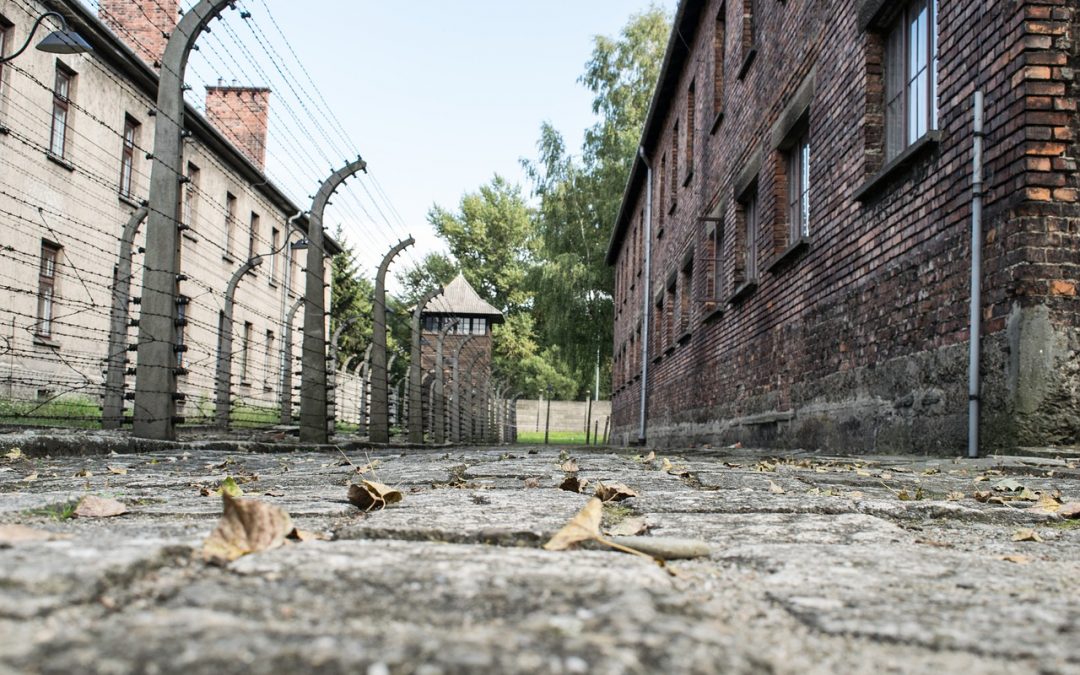This spring, I went on a trip to the places where my parents were born. Along with my family and other passionate travelers, I explored the Ukraine and Poland on a remarkable pilgrimage made possible by The United States Holocaust Memorial Museum. The trip they sponsored was attended by about 40 people in late May to early June. It was a once-in-a-lifetime journey that I won’t soon forget.
The children of immigrants and refugees don’t always get to explore their roots so physically, emotionally, and intimately. As the daughter of Holocaust survivors, it was a privilege to help organize and take part in such an opportunity this year. I saw where my mom and dad were raised, where they lived, and in the case of my father, persecuted and hidden from Nazis during WWII. It was a journey back in time that brought to light the pain and passion of my ancestors that I carry in my heart to this day.
My father was from a town called Lvov, once a famous and populous city in Poland. Now Lviv, it’s part of the Ukraine, where it is considered a little dangerous and welcomes few visitors. We were able to find the neighborhood my dad lived in and, somewhat astonishingly, visit the actual house he was born in as well. Later, he would suffer in a concentration camp called Janowska, which after all this time is used as a prison (we were unable to visit). Considering that in all concentration camps in Poland are memorial sites, the fact that this one is still used is disturbing.
Then we went to where my mother was born: a bucolic, beautiful town called Busk. My mother’s entire family lived in this village; it was incredible to see and experience many of the same things she grew up seeing and experiencing.
I should also mention that there was a Polish family that hid my father and his family during the war. He was housed in a bunker on their farm, an act that saved his life as well as his parents, brother, and three friends. My uncle even wrote about this experience in a book: Eye to Eye: A Memoir of the Nazi Holocaust in Poland.
I invited one of the great grandchildren from this family to come on the trip and was delighted when they joined us for part of it. I hoped we could see the bunker firsthand and understand where my father and his family were sheltered. Alas, the world is a different place: nobody could find the bunker.
That was an extraordinarily meaningful part of the trip for me and my family, and the first part of our journey.
After our visit to Ukraine, we went to Poland and visited Warsaw and Krakow. My father spent time in Krakow after the war, and his brother gave me some addresses of nightclubs and places they lived and visited. We were able to retrace his steps and relive his time enjoying life after his harrowing experience during the war.
My uncle also gave me an address in Lviv so that I could find a factory called the Schwartz factory where my father’s sister was killed. She was the only sibling not hidden in the bunker, and unfortunately didn’t make it. I went to where that factory was, but there was something going on militarily so I couldn’t get in.
In total, we visited five or six concentration camps/death camps on this trip. This was about as depressing as you’d expect. For others it was more depressing than it was for me; I have lived with it my whole life as the daughter of survivors and understood their struggle and its aftermath well. When you’ve never lived with it and see it, it’s mind-blowing.
After we saw all of this in Krakow, I met up with a man named Jonathan Ornstein who runs the JCC (Jewish Community Center) there. A Jewish kid from Long Island now in his 40s, Jonathan met us in Krakow and shed a whole new light on the history and legacy of our Jewish heritage. We were fed delicious homemade food which we enjoyed partaking in with our hosts. They talked about growth and renewal and showed us the beauty of Judaism and life more generally after so much pain.
One thing Jonathan said that I found interesting was that often visitors will walk in the JCC and reveal that they are Jewish but didn’t know it. For instance, one Jewish woman was given away as a child to a Catholic couple after her parents died, which was not uncommon at the time. She was told never to say that she was Jewish, but at age 80 finally shared this information with her granddaughter. The granddaughter didn’t know what to do, so she went to the JCC. With the danger associated with Judaism lifted and youngsters going back to their roots, Jewish life is experiencing rejuvenation, a miraculous occurrence for our faith and heritage. It was amazing to go to the JCC and hear these stories.
This trip was moving in countless ways and I consider myself blessed to have been able to share it with family and friends. I am also grateful to the US Holocaust Memorial Museum for making it possible for us to travel with such purpose — a purpose I will keep close to my heart for years to come.
